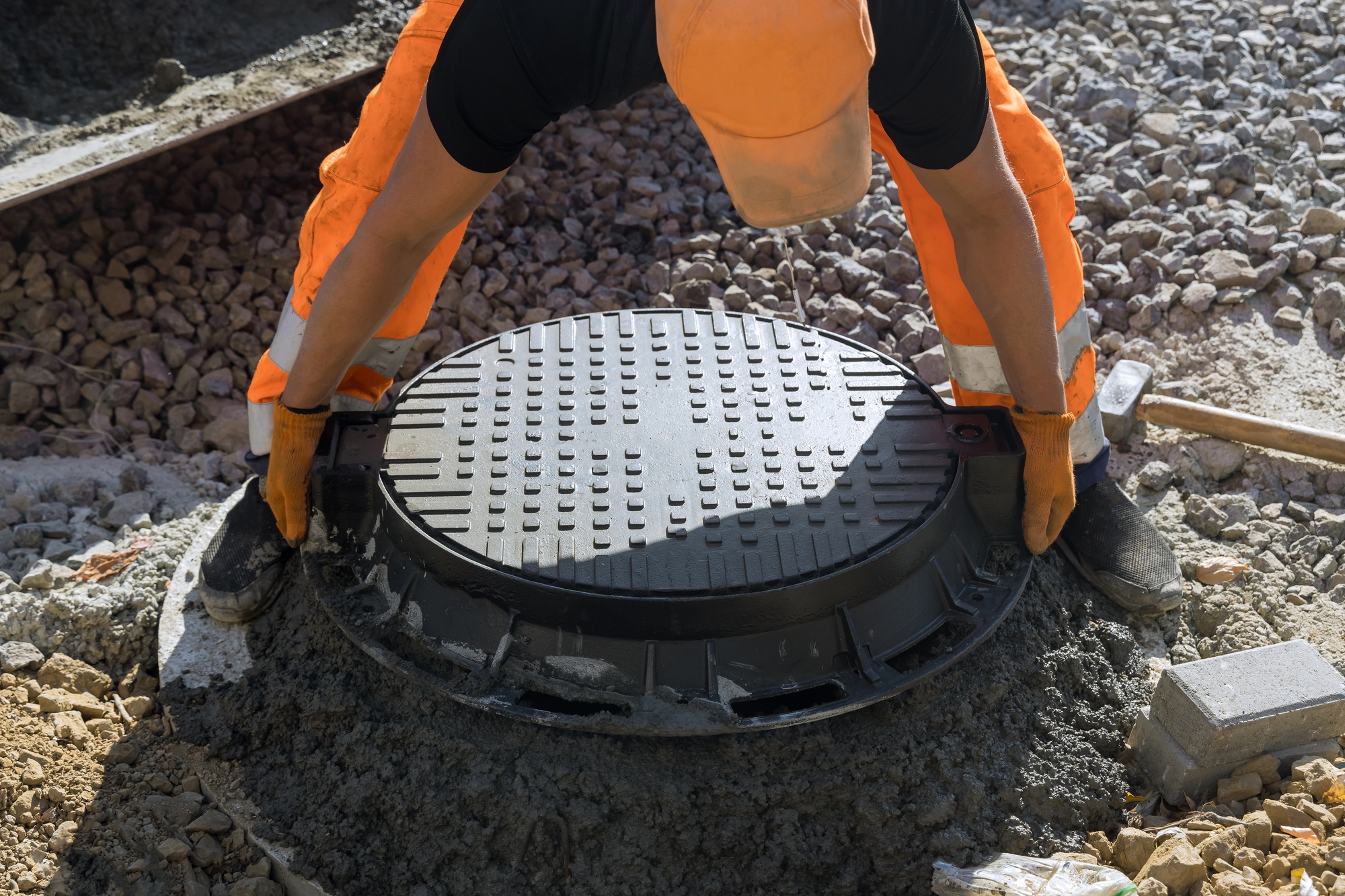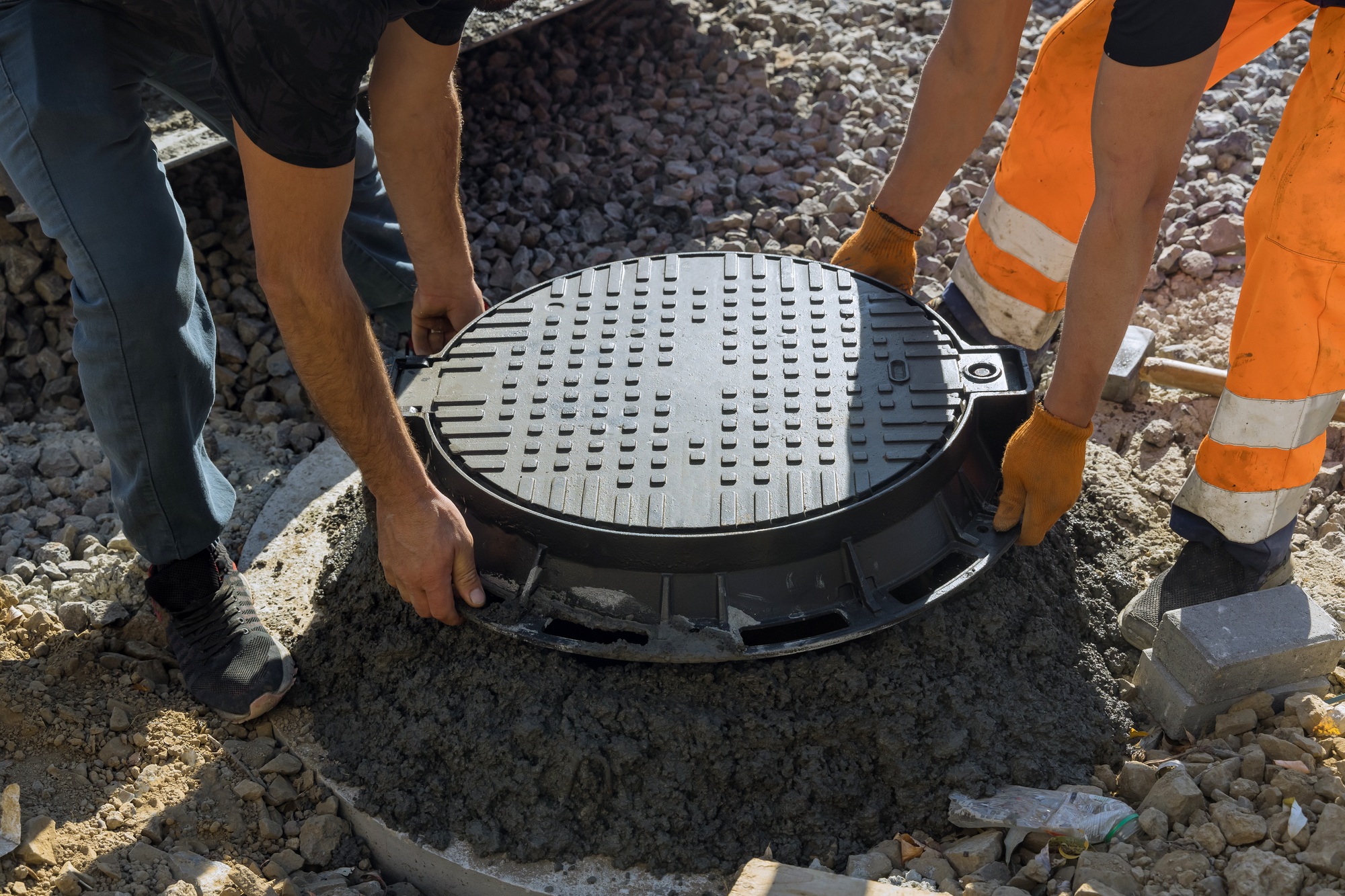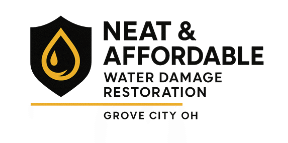When a sewage backup occurs in your home or business, it creates a highly unsanitary and dangerous situation. Immediate and professional Sewage Cleanup Grove City, OH services are not just a convenience; they are a critical necessity for health and safety. Raw sewage contains harmful bacteria, viruses, and other pathogens that pose severe health risks to anyone exposed. It also causes extensive property damage, saturating materials, weakening structures, and leaving behind persistent, unpleasant odors. Addressing sewage contamination quickly and thoroughly prevents long-term problems like mold growth and structural decay. Our dedicated approach focuses on restoring your property to a safe, clean, and healthy environment, ensuring every affected area receives meticulous attention.

Understanding the Dangers of Sewage Contamination
Sewage water is not like typical floodwater. It is classified as “Category 3” water, meaning it is grossly contaminated and can cause severe illness or death if ingested or if it comes into contact with open wounds. This is why attempting to clean up a sewage spill without proper training and equipment is extremely risky. The contaminants in sewage are microscopic, meaning they can spread easily through the air as aerosols or remain on surfaces even after visible water is gone. These hidden dangers make professional intervention absolutely essential for the safety of your family or employees and the integrity of your property.
Health Risks from Sewage Exposure
Exposure to sewage can lead to a variety of serious health issues. The water carries a cocktail of microorganisms, including E. coli, Salmonella, Hepatitis A, and various parasites. These can cause gastrointestinal illnesses, skin infections, respiratory problems, and even more severe conditions. Children, the elderly, and individuals with compromised immune systems are especially vulnerable to these pathogens. Simply touching contaminated surfaces or breathing in airborne particles can lead to infection. Professional cleanup teams use specialized disinfectants and techniques to neutralize these biological hazards, significantly reducing the risk of disease transmission and creating a safe living or working space once again.
Property Damage Caused by Sewage
Beyond the immediate health concerns, sewage contamination causes significant damage to your property. Porous materials like drywall, carpeting, wood flooring, and upholstery absorb sewage quickly, becoming saturated with contaminants. These materials often cannot be salvaged and require careful removal and disposal. Water damage from sewage can also weaken the structural integrity of your home’s foundation, walls, and subflooring over time. Furthermore, the high moisture content combined with organic matter creates an ideal breeding ground for mold and mildew, which can begin to grow within 24 to 48 hours. Mold not only causes further structural damage but also releases spores that can trigger allergic reactions and respiratory issues, compounding the existing health risks.
The Professional Sewage Cleanup Process
A professional sewage cleanup is a multi-step process designed to thoroughly remove contamination, dry the affected area, and restore the property. Each step is critical to ensure complete remediation and prevent secondary damage. Our teams follow strict protocols, using industry-standard equipment and techniques to handle every aspect of the cleanup. This systematic approach ensures that no detail is overlooked, from initial assessment to the final restoration, providing a comprehensive solution to a complex problem. We prioritize efficiency and effectiveness to minimize disruption and get your property back to normal as quickly as possible.
Step 1: Assessment and Safety Protocol
The first action a professional team takes is a thorough assessment of the affected area. This involves identifying the source of the sewage backup, determining the extent of the contamination, and categorizing the type of water damage. Based on this assessment, the team establishes a containment zone to prevent the spread of contaminants to unaffected areas of your property. Technicians wear specialized personal protective equipment (PPE), including full-body suits, respirators, gloves, and boots, to protect themselves from exposure to hazardous materials. They also set up negative air pressure to prevent airborne pathogens from escaping the contaminated zone, ensuring the safety of everyone in the building.
Step 2: Water Extraction and Debris Removal
Once the area is secure, the immediate priority is to extract all standing sewage water. Powerful pumps and wet vacuums quickly remove the bulk of the liquid. After water extraction, the team carefully removes all porous materials that have been contaminated beyond repair. This includes items like carpets, carpet padding, drywall, insulation, fabrics, and even some types of wood flooring. Non-salvageable items are bagged and disposed of according to strict health regulations, preventing further spread of hazardous materials. This step is crucial because leaving contaminated materials in place would allow pathogens to continue to thrive and odors to persist, making complete remediation impossible.
Step 3: Cleaning and Disinfection
After removing all visible water and contaminated debris, the professional team begins the rigorous cleaning and disinfection phase. They meticulously clean all salvageable surfaces, including floors, walls, and structural elements, using specialized cleaning agents designed to break down organic matter and eliminate odors. Following cleaning, a broad-spectrum antimicrobial agent is applied to all affected areas. This powerful disinfectant targets and kills bacteria, viruses, fungi, and other harmful microorganisms that sewage leaves behind. Technicians apply these agents thoroughly, ensuring every crack and crevice is treated to neutralize pathogens and prevent future microbial growth. This step is fundamental to making the environment safe and hygienic again.
Step 4: Drying and Dehumidification
Even after cleaning and disinfecting, moisture remains embedded in building materials. This moisture must be completely removed to prevent mold growth and further structural damage. Industrial-grade air movers and dehumidifiers are strategically placed throughout the affected area. Air movers create high-velocity airflow across surfaces, accelerating evaporation, while dehumidifiers extract moisture from the air, lowering humidity levels. Monitoring equipment, such as moisture meters, tracks the drying progress in walls, floors, and other structural components. This precise monitoring ensures that all materials are dried to their pre-loss moisture levels, preventing hidden moisture pockets that could lead to mold or rot in the future.
Step 5: Odor Removal and Air Purification
Sewage leaves behind incredibly strong and pervasive odors that can linger long after the visible contamination is gone. Professional cleanup services employ advanced odor removal techniques to eliminate these unpleasant smells. This often involves using air scrubbers with HEPA filters and activated carbon filters to remove airborne particles and neutralize odor-causing molecules. Thermal fogging or ozone generators may also be used in some cases to penetrate porous materials and eliminate deeply embedded odors at their source. These methods ensure that your property not only looks clean but also smells fresh and free of any lingering reminders of the sewage incident, contributing significantly to a healthy indoor air quality.
Step 6: Restoration and Repair
The final phase of sewage cleanup involves restoring your property to its pre-damage condition. This may include minor repairs such as replacing removed drywall, installing new flooring, repainting walls, or repairing damaged subflooring. While extensive structural reconstruction is typically handled by separate contractors, professional cleanup services often manage the immediate restoration tasks necessary to make your home or business fully functional and safe again. This step ensures that all areas affected by the sewage are not only clean and dry but also aesthetically restored, allowing you to return to your normal routine with confidence in the safety and appearance of your property.
Why Professional Sewage Cleanup is Essential
Engaging professional services for sewage cleanup is not just about convenience; it’s about ensuring safety, efficacy, and compliance with health standards. Professionals possess the knowledge, equipment, and experience to handle the complexities of sewage contamination that ordinary cleaning methods cannot address. Their systematic approach guarantees that all hazardous materials are properly contained, removed, and disposed of, mitigating risks that untrained individuals would face. This expertise protects your health, preserves your property value, and provides peace of mind knowing the job is done right.
Expert Knowledge and Specialized Equipment
Professional sewage cleanup technicians undergo extensive training in biohazard remediation and water damage restoration. They understand the science behind contamination, including the types of pathogens present in sewage and how they spread. This knowledge enables them to choose the most effective cleaning and disinfection protocols. Furthermore, they utilize specialized equipment that is not available to the average homeowner or business owner. This includes powerful extraction units, industrial-strength dehumidifiers, air scrubbers, and highly effective antimicrobial agents. These tools are crucial for thorough drying, effective decontamination, and complete odor removal, ensuring a level of cleanliness and safety that cannot be achieved with standard household products.
Safety and Compliance
Handling sewage requires strict adherence to safety protocols and regulatory guidelines. Professional cleanup companies are familiar with local, state, and federal regulations regarding biohazard waste disposal and environmental safety. They ensure that all contaminated materials are handled, transported, and disposed of legally and safely, preventing environmental pollution and protecting public health. Attempting to manage sewage cleanup yourself could lead to fines, health code violations, and, more importantly, put your health and the health of others at severe risk. Professionals mitigate these risks by following established industry standards and best practices, ensuring a compliant and safe cleanup.
Preventing Secondary Damage
One of the most significant benefits of professional sewage cleanup is the prevention of secondary damage. Without proper and immediate intervention, sewage contamination can lead to widespread mold growth within days. Mold not only causes significant structural damage to wood, drywall, and insulation but also produces allergens and irritants that can cause respiratory issues and other health problems. Professionals ensure complete drying and apply mold inhibitors to prevent its development. They also address potential structural weaknesses caused by water saturation, preventing long-term issues like warped floors, crumbling drywall, and compromised structural integrity, ultimately saving you from more extensive and costly repairs down the line.
Peace of Mind
Dealing with a sewage backup is a highly stressful event. The thought of hazardous waste in your home or business can be overwhelming. Hiring a professional sewage cleanup service provides invaluable peace of mind. You can trust that experienced and certified technicians are handling the crisis efficiently and effectively. They manage the entire process, from initial assessment and containment to thorough cleaning, disinfection, drying, and odor removal. This allows you to focus on other important matters, knowing that your property is in capable hands and that every measure is being taken to restore it to a safe and healthy condition. This assurance is a significant benefit during a difficult time.

Choosing a Reliable Sewage Cleanup Service in Grove City, Ohio
Selecting the right service provider for sewage cleanup in Grove City, Ohio, is a crucial decision that impacts the safety and restoration of your property. Look for companies that demonstrate a strong commitment to professionalism, rapid response, and comprehensive service. A reliable service understands the urgency of sewage emergencies and is equipped to handle all aspects of the cleanup process with precision and care. They should have a proven track record of successful remediation and a clear understanding of the specific challenges presented by sewage contamination. Your choice of service provider directly influences the effectiveness and safety of the entire cleanup operation.
Experience and Training
A reputable sewage cleanup service employs technicians who are not only experienced but also hold relevant certifications in water damage restoration and biohazard remediation. Certifications from recognized industry organizations, such as the Institute of Inspection, Cleaning and Restoration Certification (IICRC), indicate that technicians have undergone rigorous training and adhere to high professional standards. Experienced teams have encountered various types and scales of sewage incidents, allowing them to anticipate challenges and apply proven solutions effectively. Their expertise ensures that all steps of the cleanup, from initial assessment to final restoration, are performed correctly and safely, minimizing risks and maximizing results.
24/7 Availability
Sewage emergencies do not adhere to business hours. A burst pipe or a clogged sewer line can happen at any time, day or night, on weekends or holidays. Therefore, a reliable sewage cleanup service must offer 24/7 emergency response. Immediate action is critical to prevent further damage and reduce health risks. A company that provides round-the-clock availability demonstrates its commitment to serving the community and responding promptly to urgent situations. Their ability to dispatch a team quickly can make a significant difference in limiting the extent of contamination and accelerating the overall recovery process for your property in Grove City, Ohio.
Comprehensive Approach
The best sewage cleanup services offer a comprehensive, start-to-finish solution. This means they handle everything from the initial water extraction and removal of contaminated materials to deep cleaning, disinfection, thorough drying, and odor elimination. A truly comprehensive service also includes post-cleanup restoration, such as repairing or replacing damaged structural elements like drywall and flooring, bringing your property back to its original state. This holistic approach ensures that you do not need to coordinate multiple contractors for different phases of the cleanup, simplifying the process and guaranteeing that all aspects of the contamination are addressed by a single, accountable team. This integrated service provides continuity and efficiency throughout the entire remediation process.
Preventing Future Sewage Backups
While professional cleanup is vital after a sewage incident, taking proactive steps can significantly reduce the likelihood of future backups. Many sewage issues stem from preventable problems within your Water Damage Restoration system or the main sewer line. Understanding common causes and implementing simple preventative measures can save you from costly and unpleasant emergencies. These preventative actions empower homeowners and businesses to maintain healthier Water Damage Restoration systems and protect their properties from the dangers of sewage contamination, contributing to a safer and more resilient community in Grove City, Ohio.
Regular Drain Maintenance
One of the simplest yet most effective ways to prevent sewage backups is through regular drain maintenance. Avoid pouring grease, oil, or food scraps down your drains, as these substances can accumulate over time and create stubborn clogs. Instead, dispose of them in the trash. Using drain screens in sinks and showers can catch hair and other debris before they enter your pipes. Periodically flushing your drains with hot water or a mixture of baking soda and vinegar can help keep them clear. For persistent slow drains, consider scheduling professional drain cleaning to remove blockages before they escalate into full-blown sewage backups, ensuring smooth flow within your Water Damage Restoration system.
Proper Waste Disposal
Be mindful of what you flush down your toilets. Many items commonly flushed can cause significant blockages in your Water Damage Restoration system or the main sewer line. This includes so-called “flushable” wipes (which often do not break down in pipes), feminine hygiene products, paper towels, dental floss, cotton balls, and medication. These items can accumulate and create large obstructions that impede the flow of wastewater, leading to backups. Only human waste and toilet paper should be flushed down the toilet. Proper disposal of other waste in trash bins helps maintain clear pipes and prevents unnecessary strain on your Water Damage Restoration system, reducing the risk of a sewage emergency.
Sump Pump Maintenance
If your property has a sump pump, ensuring its proper function is critical for preventing basement sewage backups, especially during heavy rains or when the water table is high. Regularly test your sump pump by pouring a bucket of water into the pit to ensure it activates and drains properly. Clean the sump pit periodically to remove any debris that could clog the pump or its float switch. Check the discharge pipe for obstructions and ensure it directs water away from your foundation. Consider installing a battery backup system for your sump pump to ensure it continues to operate during power outages, providing continuous protection against water accumulation and potential sewage intrusion.
Understanding Your Water Damage Restoration System
Familiarizing yourself with your home’s Water Damage Restoration system can help you identify potential problems early. Learn the location of your main water shut-off valve and how to turn it off in an emergency. Pay attention to warning signs such as gurgling sounds from drains or toilets, slow drains, or water backing up into sinks or showers when another fixture is used. These are often indicators of a partial blockage that could soon lead to a complete sewage backup. Addressing these minor issues promptly by calling a professional Water Damage Restoration Experts can prevent them from escalating into major sewage emergencies, saving you significant stress and repair costs in the long run.
